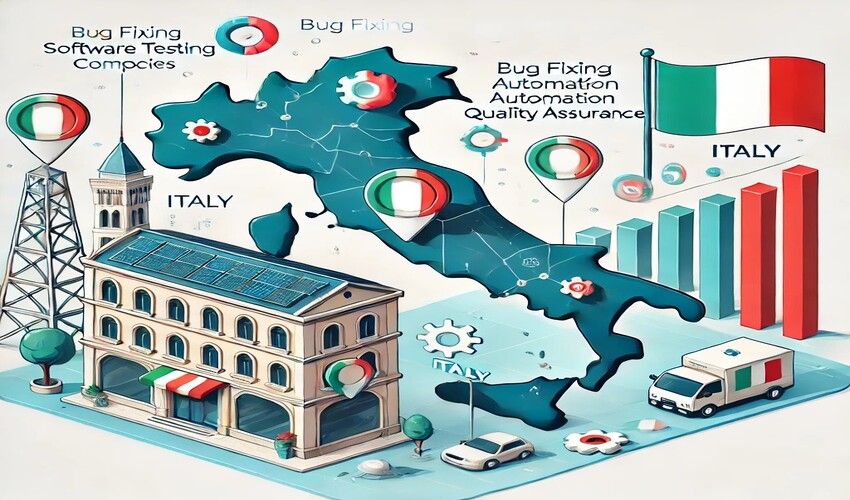From budgeting and resource allocation to project timelines and client satisfaction, the reliability of your construction estimates can make or break your experience. That’s why choosing the right construction takeoff software is a considerable decision that decides the future of your projects. We won’t be looking for the different types of software available. But, we will explore the essential questions you should keep in mind when making this decision.
10 Questions To Ask Yourself When Picking Construction Take Off Software
- What Are My Needs and Goals?
Before you dive into the world of construction cost estimation software, it is crucial to define your specific requirements and objectives. What are your business requirements, and what do you want to achieve with the estimating software? You can also analyze your goals by asking:
- Are you seeking to streamline the estimating process, reduce the margin of error, or improve project management efficiency?
- Are you looking to enhance collaboration among your team members and external stakeholders?
- What Are My Project Types?
It is beneficial for you to decide what kind of projects you deal with in your business. This gives you a clear idea of what kind of construction takeoff software will suit your projects. Ask these questions:
- Are you primarily involved in residential construction, commercial projects, industrial ventures, or civil engineering?
- Do you handle a diverse range of project types, each with its unique demands?
- What Is My Budget for Software Investment?
Understanding your budget involves considering the initial purchase cost, ongoing subscription fees, and associated maintenance expenses. Consider these questions:
- How much are you willing to allocate for cost estimation software?
- Have you considered the long-term financial implications of your software choice, including potential additional expenses?
- What Level of Customization Do I Need?
Construction projects vary widely in scope and complexity. Your software should provide the flexibility to customize estimates according to the unique demands of your projects. Consider these questions for accurate analysis:
- Are you working on various project types that require tailored templates, fields, or formulas for each estimate?
- Do you need a software solution that can adapt to specific industry requirements or cater to varying project types?
- Do I Use Other Software Tools in Your Workflow?
Integrating your project’s software with other tools, such as project management or accounting, can save you time and reduce mistakes. To determine your software needs, consider asking yourself:
- Are there other software solutions you use regularly in your construction business, such as project management, accounting, or scheduling software?
- Do you need your cost estimation software to integrate with these tools to create a more connected and efficient workflow?
- Do I Require Collaboration Features?
Collaboration is often vital in construction projects, especially when multiple team members are involved. A good construction cost estimation software should offer features that support effective teamwork. You can seek answers to these questions:
- Do you require collaboration features to enable multiple team members to work on the exact estimate simultaneously?
- Is real-time document sharing within the software a necessity for your project management?
- Should the Software Be Cloud-Based or On-Premises?
Choosing between cloud-based and on-premises software is vital to ensure accessibility, control, and scalability. Consider the following questions:
- Does your business require the accessibility and flexibility of a cloud-based software solution, allowing you to work from anywhere with an internet connection?
- Are there specific reasons, such as data security or control requirements, that lead you to prefer an on-premises software setup?
- What Type of Support and Training Do I Need?
Adequate customer support and training resources are vital for a smooth software implementation. Evaluate the level of support and training required for you and your team. Ask yourself:
- Does the software provider offer comprehensive training resources, including documentation, video tutorials, or live training sessions?
- Is immediate and effective customer support critical, especially in cases of technical issues or urgent assistance?
- Is International Project Handling a Requirement?
For those involved in international construction projects, it’s crucial that the software can handle different currencies, units of measurement, and regional variations in materials and labor costs. Consider asking:
- Determine whether your business is engaged in international construction projects that involve different currencies and units of measurement.
- Is a Mobile App Necessary?
Consider whether a mobile app is essential for your workflow. Mobile access can be beneficial for working on estimates or accessing project data from the field. Analyze based on:
- Evaluate the advantages of having a mobile app that allows you to work on estimates or access project data while on-site or in the field.
- Determine whether real-time access to project data from the area is a critical requirement for your business.
Conclusion
With these questions at your fingertips, it will be far easier to decide the type of estimating software you are looking for your business. Except for these questions, it is paramount to look for a trusted partner in the market. With so many brands developing software solutions, it might be confusing to go for the best one. McCormick Systems provides exceptional construction takeoff software solutions for construction businesses. Take advantage of their expertise today and experience impeccable transformation.
Author Bio:
Roger Jack
I am a seasoned content writer and accomplished professional blogger. With a wealth of experience, I create captivating content that resonates. From insightful articles to engaging blog posts, I bring expertise and creativity to every project. Reach out on McCormick Systems.
















Leave a Reply